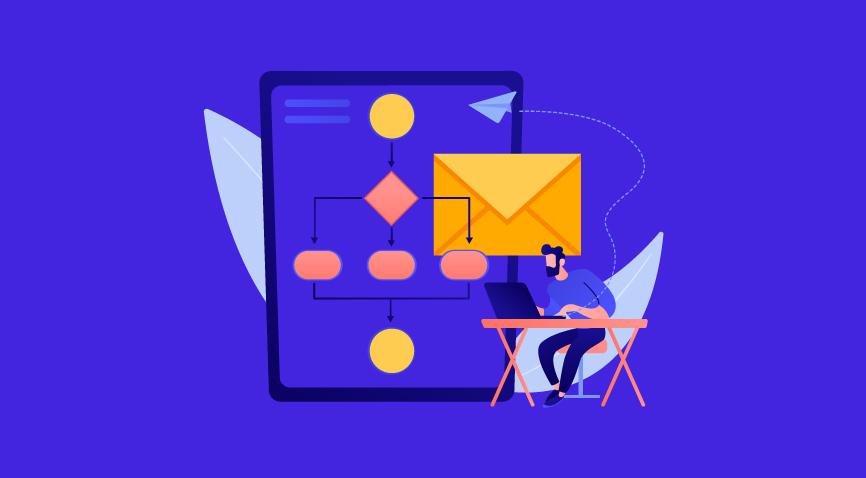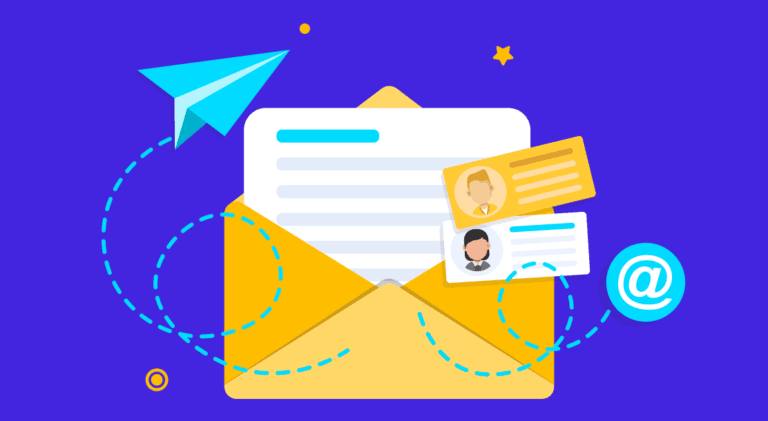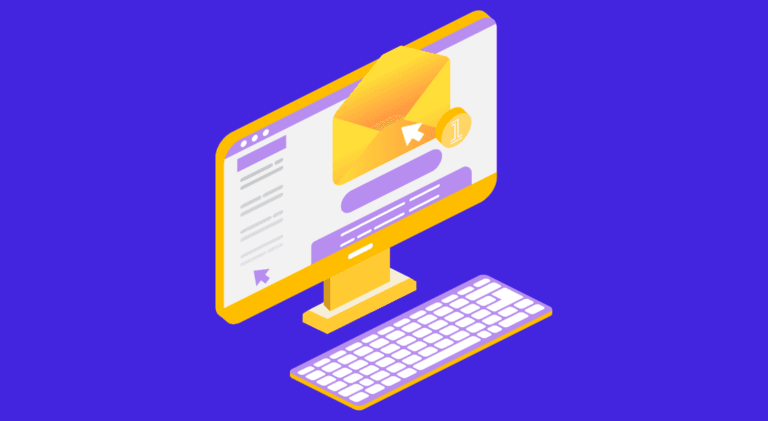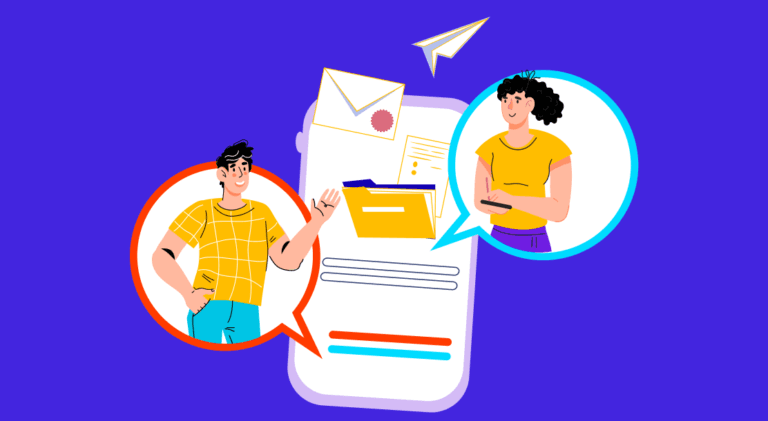Setting Up Automated Email Marketing Workflows Effectively

Table of Contents
- Setting Up Automated Email Marketing Workflows Effectively
- Benefits of Email Marketing
- Conversions
- Brand Awareness
- Customer Loyalty
- Kinds of Email Marketing
- Welcome Workflows
- Thank You Workflows
- Transactional Workflows
- Abandoned Cart Workflows
- Re-engagement Workflows
- Steps to Automate Email Workflow
- FAQs
- Conclusion
Email subscribers form an important part of your target group whom your business should treat very responsibly. These are the people who have made an effort to fill in their details and subscribe to your mailing list. In a world where it is increasingly difficult to hold people’s attention, this act in itself is proof that these subscribers are there because they truly like your product or the service you provide. Now that you have their attention, email marketing workflow represents a golden opportunity to show your consumers the other sides of you and what more your business can offer.
In a nutshell, email marketing is the process of sending a commercial email to your subscribers to inform them about your brand values, mission, vision, a new product or to upsell or build a community, etc. It is a great way to engage with your loyal consumers on a very personal level.
This is because email marketing has evolved from mass mailings to customized emails that focus on adding value to the time spent engaging with the email.
Benefits of Email Marketing
There are three important benefits of email marketing.
1. Conversions
As mentioned earlier, the subscribers are your loyal consumers who are there in your list because they are invested in your product or service. A personalized email is a great way to tell them about a discount offer or a sale that you are going to launch soon.
2. Brand Awareness
Emails are an evolved form of direct mail marketing, and if anyone is familiar with the successes of direct mail marketing is already taking email marketing very seriously. Like direct mail marketing, email marketing lets you communicate with your consumers one on one.
If your brand’s email is in someone’s inbox, then your brand is already there in their subconscious. It has more impact than a simple social media post where you don’t know if a person has seen it or not.
Apart from this, email marketing is dynamic and offers efficient scaling. You can send emails to a large (or small depending on your need) number of people at a very low cost.
3. Customer Loyalty
Emails are a powerful tool to build a community that believes in the same values as your brand. It encourages your consumer to be your brand ambassador at various stages of a consumer journey right from the moment they subscribe to your mailing list.
Automated Email Marketing
There are various touchpoints in a consumer journey that your business can explore, and multiple touchpoints would mean multiple emails to be written to one consumer that is personalized and has context. This sounds like a lot of work, especially if your list is growing.
By automating email marketing, you can save time as well as deliver value for your consumer who has walked halfway by subscribing to your list. It is an efficient way to send timely, personalized, and relevant emails to people with a strong CTA that ensures conversion.
Email Marketing Workflow
Now that you have decided to automate your emails let’s understand what an email marketing workflow is. Automation workflows are designed to ease your everyday tasks that are slightly repetitive in nature and are quite time-consuming. The email application of this comes in handy when your subscriber triggers certain touchpoints. For example, when your subscriber’s birthday is approaching, the system will send them a personalized email.
More such examples of automated workflow triggers
People who:
- Subscribed to the email list.
- Have their anniversaries or birthdays coming up.
- Have visited a particular website.
- Are located in a particular area.
Arranging for an email workflow is not difficult. You need to have the right email marketing tool with you. Consider the following steps to create an email automation workflow:
- Create your plan.
- Choose the automation that’s right for your brand.
- Set up your email automation workflow.
- Learn how to calculate the efficiency of your email workflow.
Once the journey is defined, the campaign will be ready to get rolled out. As soon as a consumer triggers the touchpoints you have defined, they will automatically receive the email in the series.
Types of Email Marketing
Here are five email automation workflows that your business must consider adding to its marketing campaign:
1. Welcome workflows
When you go to your friend’s house or your colleague’s, they invite you in with a warm welcome. It feels nice to have someone welcome you, it is the starting point of a good relationship, and the same is true when it comes to welcome workflows. Everyone likes to be welcomed in a group of people with a similar mindset. According to neilpatel.com, studies have shown that 74% of new subscribers expect a welcome message after giving their email address.
Here are some purposes that a welcome workflow serves:
- To introduce them to your values, mission, vision, and of course, your products and services
- Give away discounts incentives to check out your products and services
- Tell them what all they can expect from you
2. Thank you workflows
Thank you email workflows can come in different varieties. They are essentially used to thank your consumers for participating in an event, subscribing to your email list, and many other activities.
The goal is to keep the link between you and your consumers unbroken, even after a certain event or action in the consumer journey is completed. This can also be used to re-engage with your inactive consumers, reminding them that you are there for them.
3. Transactional workflows
The main aim of transactional workflows is not to abandon your customer after they have made a purchase. It’s going all the way with them. This is not revolutionary, but goodwill on your part goes a long way in building a relationship with your consumer.
You can view ‘thank you’ workflow as a subset of transactional workflow. This is because in the thank you workflow, communication focuses on thanking your consumer for completing an action, while in the transactional workflow, the communication is more event-specific. For example, an email asking for feedback for an event you just attended would be transactional in nature.
4. Abandoned cart workflows
A lot of people find abandoned cart emails annoying. Often, customers add different products to their cart while shopping on e-commerce sites but end up not buying them..
If people find it annoying, why send it? Because this is not universal. A lot of people abandon carts for different reasons, and context takes an important position. So yes, abandoned cart workflows work and should be sent out.
There have been studies that suggest that 81% of consumers were somewhat likely to purchase something as a result of targeted email.
5. Re-engagement workflows
The effectiveness of email marketing depends on how well you engage the individual participants. Practicing good email list hygiene is important. It involves checking up on inactive subscribers and looking for ways to re-engage them or remove them from your list. The latter might be a difficult task but remember that it’s all about your consumer and their needs. They are inactive for a reason, and bombarding them with emails is not going to help your cause.
Steps to create automated email workflow
For you to curate the best email marketing automation workflow, go through the following six steps for a better understanding.
1. What is your end goal?
An impeccable email workflow can help you attain various tasks varying from onboarding new customers/clients to advancing them down the funnel. Although increasing conversions and sales is the ultimate goal for a lot of people, it still makes sense to focus on building an individual experience. Now, depending on where your customers lie in the funnel, you may want to:
- Build trust among the target audience.
- Showcase your expertise and establish authority.
- Announce product/service launch.
- Onboard more clients.
2. Create enrollment triggers
Depending on what your goal is, enrollment triggers can be clicking on the link, making a purchase, downloading brochures, signing up for daily blogs, and so forth. After deciding the goal, keep the trigger/CTA in mind and take the customers through an individual journey with your brand.
Furthermore, you can set additional triggers to engage customers and adjust the workflow according to their reactions. For instance, depending on how customers respond to your email, you can move them down the funnel and send them different sales pitches or keep engaging with them for more time.
3. Come up with a list
Create a list of contacts. It can either be static (manually created, where you can further extend the list) or active (automatic lead collection). Start with contacts that are already in your system and configure the marketing platform. Depending on who reacts to these emails, you can then create a new list with qualifying leads.
4. Create the body
By now, you know what your aim is and what kind of workflow you require. The next step is to curate the email body. Think of how many steps are needed in the workflow to finally reach the main goal. For instance, in a mail where you are welcoming customers to your blog subscription, you may want to send three to four emails over a period of time.
It is of paramount importance to deliver content in a logical manner to gradually move leads through the marketing funnel. Start with sending a welcoming email, then talk about your brand story a few days later, and then introduce them to your daily blog subscription.
5. Make sure to add a time delay
Do not forget to add time delays via the email automation software, between your email to give the consumers time to interact with each one. Depending on the purpose of the emails, set different time delays. For instance, create a two-day gap for lead-nutrition workflows, a week for new product launches, and so on. Other than that, it is vital to send emails when customers are most receptive.
6. Test out the workflow
Before finalizing the workflow, be sure to check it for any errors and test it out by sending emails to yourself. For instance, check if the emails are in the right order, whether the sender information is accurate, and if the contact list consists of the relevant recipients.

Conclusion
Email automation is a great way to engage with your consumers. In a world where holding someone’s attention is becoming very difficult, email marketing provides a golden opportunity for your business to shine brightly in front of your consumers. Loyal consumers who have made extra efforts to subscribe to your email list because they like something about you. And since they are willing to take that extra step, you should be more than willing to do the same.
FAQs
Let us take a simple example, such as sending a birthday wish to your customer. When you do that through an email, you end up making the customer feel like a VIP. You can also send them a special discount on their birthday. A personalized campaign, like such, is a great way to build loyalty and keep the brand fresh in their mind. Furthermore, it can also act as an incentive to buy more from the company or use your services.
For this to work, you will require their date of birth, so make sure to ask them when they sign up. And, for other scenarios, use the date the customer was added to a particular list. Using this data, create a workflow and execute the message on the exact date through one of the best email automation software.
There are many email automation software, but some of our favorites are:
Drip
ConvertKit
Infusionsoft
Sendinblue
Mailchimp
Creating an automated email campaign has now become easier than ever. All you have to do is open the software of your choice and follow the steps one by one.
Usually, the software works like this- you go to the dashboard and select the automation tool, click on whether you want to send out one mail or two, create a campaign, review settings, start sending, and you are done! However, these steps may vary from software to software. To get a better understanding, study your preferred software inside and out!
Short answer, yes. It is a highly impactful strategy used by many marketers that send triggered emails or timed promotional emails to customers on their mailing list. This helps the marketing team send personalized messages to both prospects and customers on a particular schedule or when the customers are extremely active.
The setup of a marketing automation flow is often fairly straightforward, and usually, it involves installing a bit of code on your website header. This process can take around 30 minutes.
From a marketing perspective, an automated email workflow involves elements such as:
Going through various touchpoints in the customer lifecycle. For instance, when they visit the website or contact customer care.
Such conditions or triggers can be customer characteristics or behavior.
These actions lead to sending emails or adding them to the list.
All of this eventually helps the company get a better understanding of the client and helps cater to their needs in a more significant and more efficient way. Furthermore, it will help keep the brand on top of their minds and may lead to more sales.
Latest Blogs
Explore how Google’s 2025 AI search updates triggered ranking chaos. Learn actionable strategies to adapt your SEO for AI Overviews, zero-click searches, and SERP volatility. Stay ahead now.
Learn how to rank on AI search engines like ChatGPT, Perplexity, and Gemini by optimizing your content for authority, structure, and relevance. Stay ahead in AI-driven search with this strategic guide.
Explore the best healthcare SEO services for your medical practice. Improve online visibility and effectively reach more patients in need of your services.
Get your hands on the latest news!
Similar Posts

Email Marketing
6 mins read
11 Tips to Design Impactful Email Banners

Design
9 mins read
7 Benefits of a Simple Mailer Design

Email Marketing
7 mins read